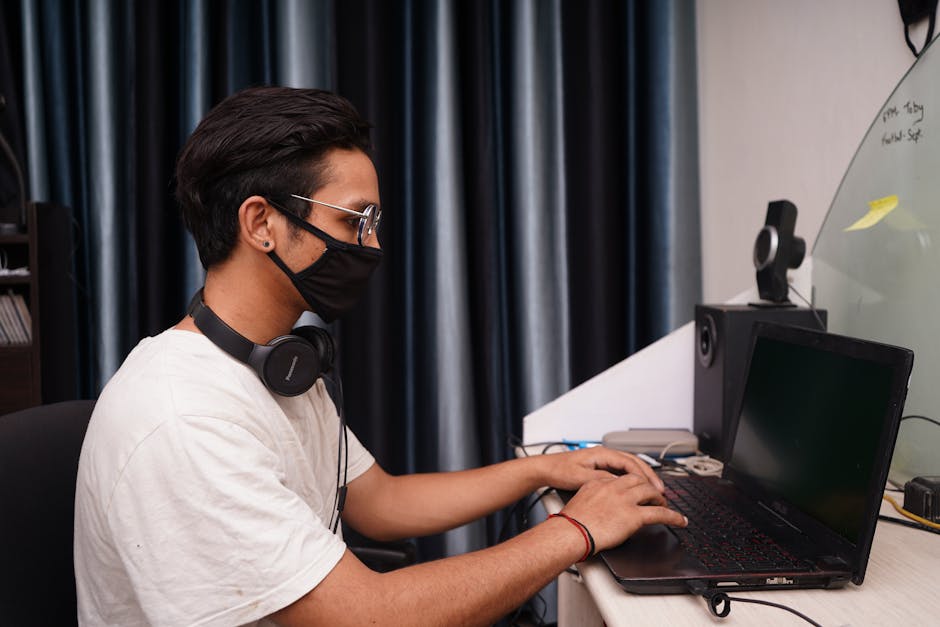Work-Life Integration: The New Paradigm for Hybrid Workplaces
“As the boundaries between work and personal life blur in the hybrid era, organizations are shifting from the traditional concept of work-life balance to work-life integration. This article explores the challenges and opportunities of this new paradigm, offering insights for HR and IT managers to foster a more holistic and flexible work environment. ”

The Evolution from Work-Life Balance to Work-Life Integration
In today's rapidly changing work landscape, the concept of work-life balance is undergoing a significant transformation. As we navigate the complexities of hybrid work environments, a new paradigm is emerging: work-life integration. This shift reflects the blurring lines between our professional and personal lives, especially in an era where the home office has become a central hub for both work and family activities.

Understanding Work-Life Integration
Work-life integration is more than just a buzzword; it's a holistic approach to managing the demands of both work and personal life. Unlike the traditional notion of work-life balance, which often implied a clear separation between the two spheres, integration acknowledges the fluid nature of modern work and life.
In a hybrid work model, employees are no longer confined to the 9-to-5 office routine. Instead, they're navigating a complex interplay of professional responsibilities and personal commitments throughout the day. This new reality requires a more flexible and adaptive approach to managing time and energy.
The Challenges of Blending Work and Life
While work-life integration offers greater flexibility, it also presents unique challenges:
-
Boundary Blurring: Without clear delineations between work and personal time, employees may struggle to "switch off" from work mode.
-
Increased Stress: The constant intermingling of work and personal tasks can lead to heightened stress levels and potential burnout.
-
Technology Overload: The same tools that enable flexible work can also contribute to a sense of always being "on call."
-
Mental Health Concerns: The lack of clear separation between work and personal life can impact mental well-being and overall job satisfaction.
Strategies for Successful Work-Life Integration
For HR and IT managers looking to support their teams in this new paradigm, consider the following strategies:
1. Embrace Flexibility
Encourage flexible working hours and locations. This allows employees to structure their day in a way that accommodates both work and personal needs.
2. Focus on Outcomes, Not Hours
Shift the emphasis from time spent working to results achieved. This approach recognizes that productivity isn't always tied to traditional work hours.
3. Promote Digital Wellness
Implement policies and tools that support digital well-being, such as encouraging "no-meeting" days or setting expectations around after-hours communication.

4. Provide Mental Health Support
Offer resources and programs that support mental health and stress management. This could include access to counseling services or mindfulness training.
5. Foster a Culture of Trust
Build a workplace culture that trusts employees to manage their time and responsibilities effectively, without micromanagement.
Technology's Role in Work-Life Integration
As IT managers, it's crucial to leverage technology that supports work-life integration:
- Collaboration Tools: Implement platforms that facilitate seamless communication and project management across different work settings.
- Time Management Apps: Provide tools that help employees track and manage their time effectively across work and personal tasks.
- Virtual Meeting Spaces: Invest in high-quality video conferencing solutions to maintain team cohesion in hybrid environments.
Choosing the right workplace management software can significantly impact how well your organization adapts to work-life integration.
The Future of Work: Embracing Integration
As we move forward, it's clear that the future of work lies in embracing integration rather than striving for an often elusive balance. By acknowledging the interconnected nature of work and personal life, organizations can create more supportive, flexible, and ultimately more productive work environments.

For HR and IT leaders, the challenge lies in creating frameworks and systems that support this new way of working. This might involve rethinking traditional policies, investing in new technologies, and fostering a culture that values results over rigid schedules.
Conclusion: A New Approach to Work and Life
The shift from work-life balance to work-life integration represents a fundamental change in how we approach our professional and personal lives. By embracing this new paradigm, organizations can create more resilient, adaptable, and satisfied workforces.
As we continue to navigate the complexities of hybrid work, the key lies in flexibility, trust, and a holistic approach to employee well-being. By supporting work-life integration, companies can not only improve productivity but also enhance employee satisfaction and retention in an increasingly competitive talent landscape.
Remember, the goal isn't to achieve perfect harmony between work and life – it's to create a flexible, integrated approach that allows individuals to thrive in both their professional and personal spheres. As we move forward, let's embrace the opportunities that work-life integration presents and build workplaces that truly support the whole person.